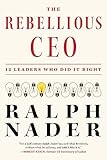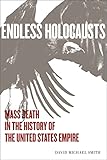By providing a comprehensive history of African American resistance to white supremacy, This Nonviolent Stuff’ll Get you Killed: How Guns Made the Civil Rights Movement Possible (Basic Books 2014) makes a major contribution to black history. Author Charles E Cobb offers one of the few accounts of the 1960s Freedom Movement written from an African American perspective, often in the words of actual movement participants.
The main purpose of this book is threefold:
1. To emphasize that the success of the 1960s Freedom Movement was based on systematic and sustained grassroots organizing – and not charismatic black leadership as portrayed in white history books.
2. To emphasize the historical importance of post-Civil War Reconstruction in the development of organized white terrorism in the South.
3. To emphasize that strategies of non-violent resistance and armed self-defense were mutually reinforcing in bringing about the 1964 Civil Rights Act and the 1965 Voting Rights Act.
The Collapse of Reconstruction
Cobb places special emphasis on the Reconstruction period that followed emancipation and the Civil War. The First Reconstruction occurred with the Union Army withdrew from southern states, leaving the old Confederate sympathizers in charge of state governments. One of their first acts was to pass the Black Codes (also known as Jim Crow), which restored white supremacy by denying African Americans basic rights guaranteed under the Bill of Rights.
 The Second Reconstruction began in 1866, when radical Republicans took control of Congress and established new governments that (for the most part) were more favorably inclined towards granting basic civil rights to newly emancipated slaves. Control of local governments remained unchanged. The Second Reconstruction was crushed by the savage violence of local leaders who openly supported (and led) white terrorism campaigns involving lynchings and vigilante and mob violence.
The Second Reconstruction began in 1866, when radical Republicans took control of Congress and established new governments that (for the most part) were more favorably inclined towards granting basic civil rights to newly emancipated slaves. Control of local governments remained unchanged. The Second Reconstruction was crushed by the savage violence of local leaders who openly supported (and led) white terrorism campaigns involving lynchings and vigilante and mob violence.
Many southern blacks were still armed after serving in the Union Army. When the US government refused to intervene to protect black southerners, they formed black militias to fight back against this organized terrorism. They were ultimately unsuccessful.
The Role of Black Self-Defense Following Reconstruction
Although the black militias disbanded, the tradition of armed resistance to “spectacle lynchings” (i.e. where lynchings were announced beforehand in the newspaper) was commonplace. Good organization by armed African Americans was surprisingly successful in preventing pre-advertised lynchings from taking place.
Many rural African American families also used guns to protect themselves against raids by the Klu Klux Klan and similar white terrorist groups. This armed self-defense became somewhat more organized after 80,000 African Americans served in World War I and one million in World War II. Besides giving them direct experience with firearms, their military service emboldened them to question their early conditioning that black people were innately inferior.
Medgar Evans Registered to Vote in 1946
Medgar and Charles Evers first registered to vote in 1946 after returning from World War II. They and other black veterans led early civil rights groups during the fifties that openly challenged Jim Crow laws. White terrorism increased dramatically as growing numbers of African Americans registered and attempt to vote. In fact many were forced to deregister. Armed self-defense groups fought back, and the growing unrest led the Eisenhower administration to pass the 1957 Civil Rights Act. This established a Civil Rights Division in the Department of Justice to investigate white terrorism.
Kennedys Embarrassed By Direct Action
When John Kennedy became president in 1961, he and Bobby Kennedy (as Attorney General) refused implement the 1957 Civil Rights Act or investigate brutal white terrorism against southern blacks.. The Kennedy brothers also discouraged Freedom Movement leaders from “embarrassing” them by engaging in direct action, such as sit-ins at white-only lunch counters. Instead, they persuaded them to focus to voter registration campaigns, which they helped to fund through foundations they were involved in.
White terrorism increased even further as northern activists entered southern communities to organize black voter registration drives among black voters. Owing to the refusal of Kennedy and Johnson to intercede to end white violence, black veterans from World War II and the Korean War formed armed self defense groups to protect SNCC (Student Nonviolent Coordinating Committee) and CORE (Congress of Racial Equality) workers from white violence committed by vigilante groups in concert with white law enforcement.
The best known of these groups was the Deacons for Defense and Justice, formed in Jonesboro Louisiana in 1965. The Deacons quickly expanded into other parts of Louisiana and Mississippi, and comparable unnamed groups formed in other states. Nonviolent workers in SNCC and CORE eventually accepted this protection. Without it, far more civil rights workers would have been murdered during their voter registration campaigns.










